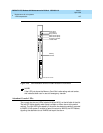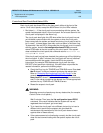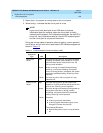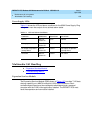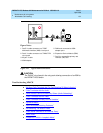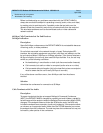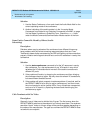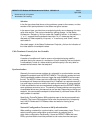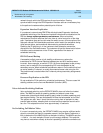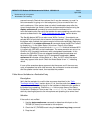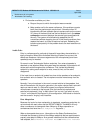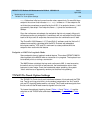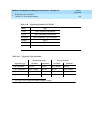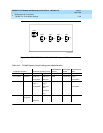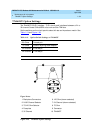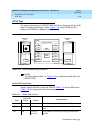
DEFINITY ECS Release 8.2 Maintenance for R8.2csi
555-233-119 Issue 1
April 2000
Maintenance for csi systems
1-95Multimedia Call Handling
1
network through which the PBX receives its synchronization. Passing
synchronization through the PBX Expansion Interface adds an unnecessary hop
to the path and creates another potential point of failure.
Expansion Interface Duplication
If a customer’s network uses PBX EPNs with duplicated Expansion Interfaces,
scheduled switching of the Expansion Interface links should be disabled on the
PBX via
change system-parameters maintenance
. When scheduled
maintenance runs and switches the links, there is a brief corruption of the data
path. If endpoints have active calls when the switch occurs, this corruption of the
data path causes Px64 handshake problems, which lead to the endpoints losing
video source status, and sometimes disconnecting as described above.
Disabling the EI switching is in the customer’s best interest to prevent the
disruption of the Px64 data stream. The customer will get the same level of alarm
indications and maintenance on the EI links, regardless of the status of
scheduled switching.
PRI D-Channel Backup
A somewhat unlikely source of call stability problems occur where the
translations for PRI D-channel Backup between two non-MCU switches were
incorrect. As an example, on switch A, DS1 1A10 was designated as the primary
source, and on switch B, the corresponding DS1 was designated as the
secondary source. When scheduled maintenance was run on the switch that had
an active standby D-channel, an audit disconnected some calls using the link.
The problem was corrected when the D-channel primary/secondary assignments
matched.
Processor Duplication on the PBX
Do not enable the PI link switch on scheduled maintenance. This can cause link
stability problems on the Accunet Bandwidth Controller (ABC).
Voice-Activated Switching Problems
Voice-activated switching on the DEFINITY MMCH does not follow the loudest
talker. The MMCH queues all speaking parties and selects a new video
broadcaster (the second-oldest speaking party) when the oldest speaking party
has stopped talking. The new broadcaster will see the last speaker as its video.
The system can also “learn” about the noise coming from an endpoint to help
prevent false switches, adapting both to noise level and repetitive sounds such
as a fan. This adaptation occurs over approximately 10 seconds.
No Switching, Full Motion Video
If a room is excessively noisy, the DEFINITY MMCH may receive sufficient audio
signal to conclude that there is a speaker present. Use the Status Conference x
form to determine if the MMCH thinks an endpoint is talking. The MMCH sets the
Ts
field to
t
for each endpoint if there is voice energy detected. This endpoint
may have to mute when nobody at the site is speaking to allow the conference to



